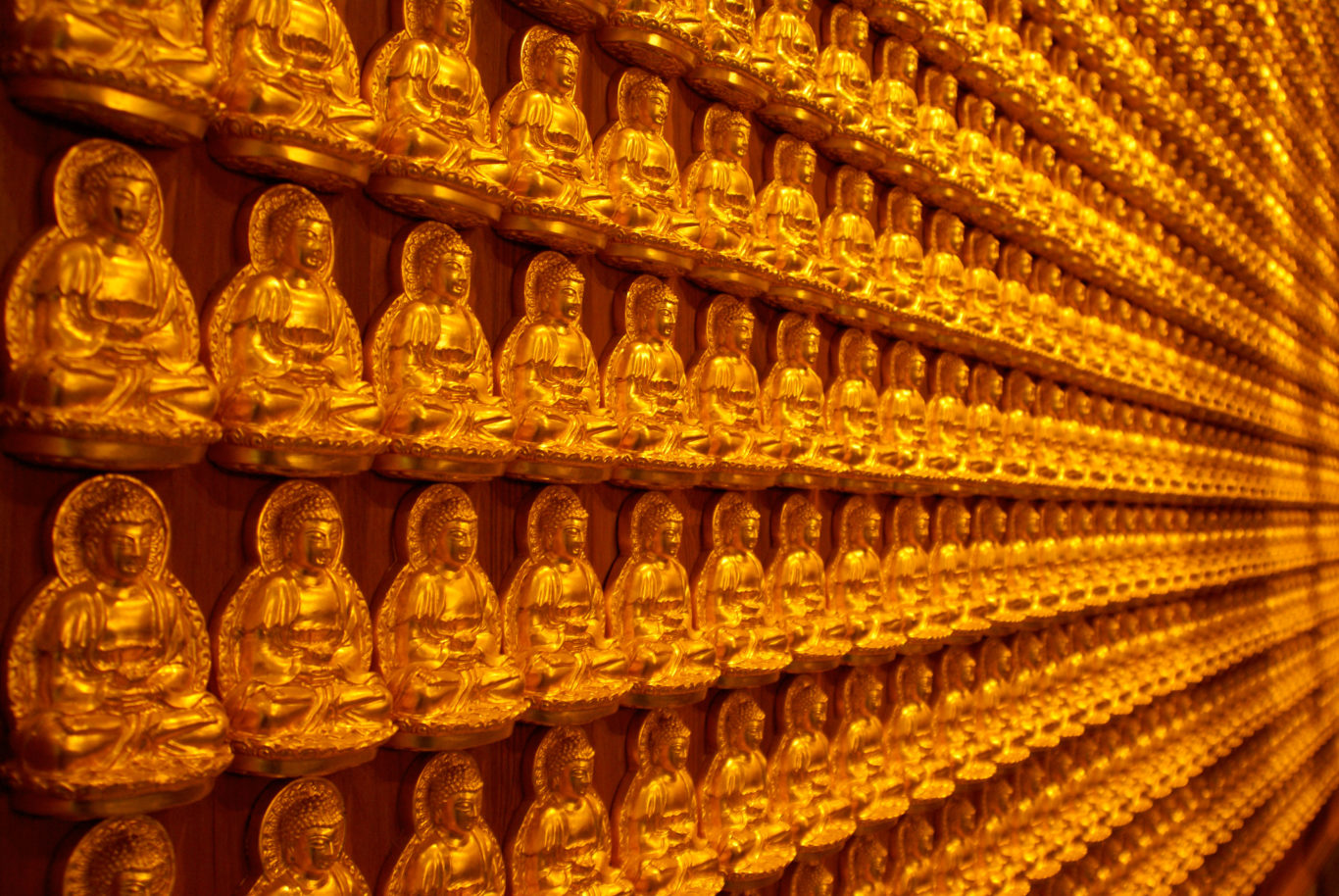Are there different kinds of Buddhism?

Buddhas grace the wall of Borum Racha temple in Bangkok, Thailand. | blickwinkel / Alamy Stock Photo
Yes—and once you begin to explore the types and practices available to you, you’ll be astonished at the variety.
In the centuries following the Buddha’s death, his teachings spread across India and to most of the rest of Asia, where they blended with existing religions and cultures. Each tradition has developed its own liturgy, meditation practices, and chanting style; even a special way of bowing. But even more important is how the various schools differ in their interpretations of who the Buddha was, what enlightenment is, and how the path to awakening is traversed.
Many schools and sects across the globe base their practices on the Buddha’s teachings, but they are often grouped into two major traditions.
Theravada (literally, “way of the elders”) is the name given to the form of Buddhism based on the Pali canon, a collection of some of the earliest records of the Buddha’s teachings. A remaining strand of what were once multiple monastic lineages, Theravada is practiced mostly in Sri Lanka and parts of Southeast Asia, including Thailand, Myanmar, Laos, and Cambodia.
The second is Mahayana (“great vehicle”) Buddhism (“vehicle” refers to the means to awakening). Mahayana first developed in ancient India, but is now well-known in its Chinese and Japanese forms—for example, Zen or Pure Land Buddhism. The scriptures for these schools are taken from the Chinese canon, a collection of Buddhist texts—many of which were translated into Chinese from now-lost Sanskrit texts and interpreted by Chinese scholars beginning as early as the 2nd century CE. The role model for Mahayana practitioners is the “Buddha-to-be,” or bodhisattva, who vows to become a Buddha in order to relieve the suffering of all conscious beings.
A form of Mahayana called Vajrayana (the “diamond” or “thunderbolt” vehicle), which focuses on tantra, also emerged in India. Though it gradually died out there, it is now the predominant form of Buddhism in Tibet and is also practiced to some extent in East Asia. Like the other Mahayana schools, Vajrayana embraces the bodhisattva ideal.
As these traditions have been transplanted to the West, they have spawned adaptations and new practices—so the varieties of Buddhism continue to multiply.

Tricycle is more than a magazine
Gain access to the best in sprititual film, our growing collection of e-books, and monthly talks, plus our 25-year archive
Subscribe now